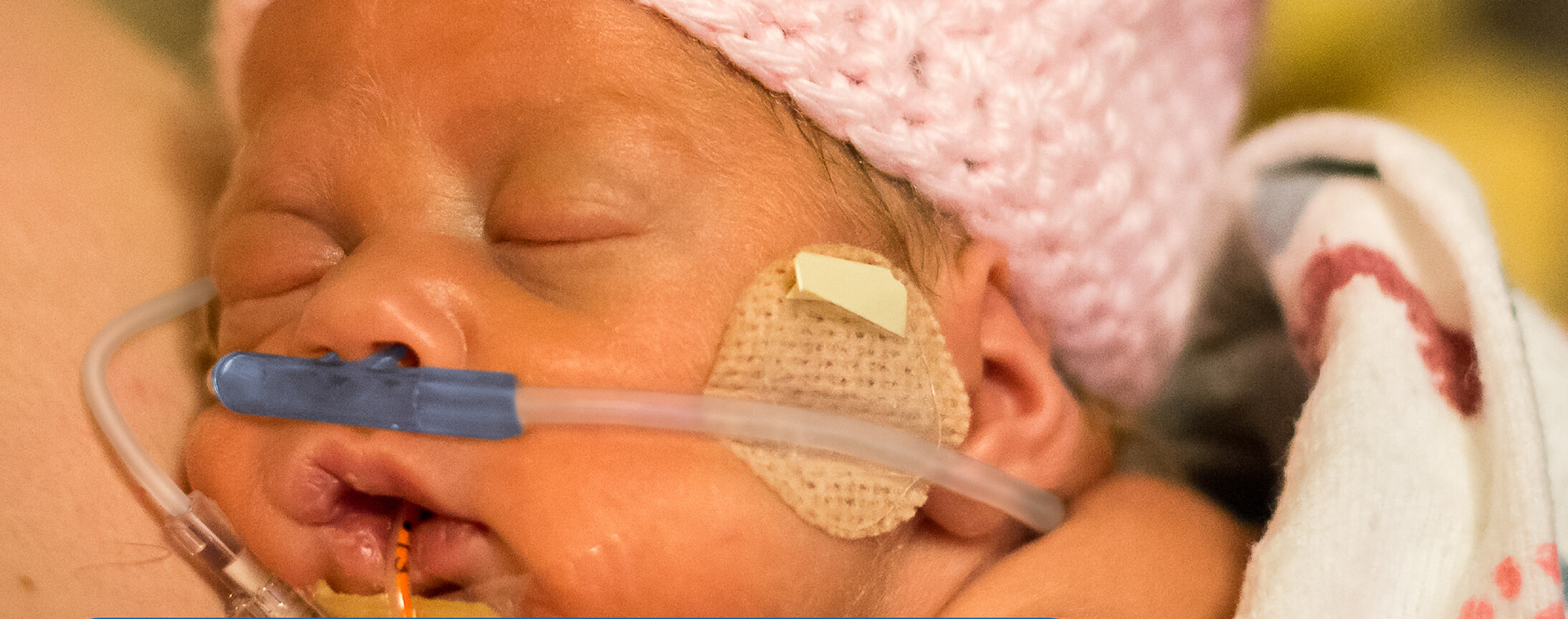A Gentler Alternative to nCPAP for Your Infants
Gentleness and Efficacy. Your Most Vulnerable Patients Deserve Both.
When caring for your newborns who need primary respiratory support or post-extubation support, the tools you know to be effective are probably ones that obscure their faces and require a tight seal in their fragile nostrils. With Vapotherm high velocity therapy you can now give your babies a simple, soft cannula interface to deliver the therapy that is clinically proven as effective and safe as nCPAP and Bi-Level PAP when treating neonates with RDS.
Sources: [1] [2] [3] [4]
It is an attractive alternative to nCPAP that provides primary respiratory support with the gentleness of high flow.

Let Babies Be Babies First
Developmental care is crucial for premature neonates and nCPAP has been the gold-standard primary respiratory support. However, skin-to-skin care and nursing can be challenging with nCPAP.
Handling the baby creates a risk of leaking at the interface that could compromise the efficacy of the therapy. The bulky interface hides a baby’s face from its family and could cause nasal trauma in this vulnerable population.
With gentle, primary respiratory support, babies don’t have to miss out on family bonding and development. Mothers can breastfeed and families can practice skin-to-skin care without worrying about compromising the therapy by disrupting a pressure seal.

Don’t Confuse Us for High Flow Nasal Cannula
Vapotherm high velocity therapy is an open system with a nasal cannula interface and can often be confused with just another commodity high flow device. However, high velocity therapy is an advanced form of high flow that has been clinically proven non-inferior to nCPAP when it comes to primary respiratory support as well as post-extubation support. These outcomes have not been shown with the commodity version of high flow. Sources: [5] [6] [7]
To give your patients the best care you can, it’s crucial for clinicians to understand how these two modalities differ in application and outcomes.

Two NICU Tools in Light of New Studies
Dr. Michael McQueen presents “Two NICU Tools in Light of New Studies – the efficacy of nCPAP with a gentler interface”. In this course you’ll learn about:
- Discuss High Velocity Nasal Insufflation (HVNI)
- Describe the differences between HVNI and High Flow Nasal Cannula (HFNC)
- Discuss how HVNI is a viable alternative to nCPAP for primary respiratory support in neonates
- Understand that the FDA distinguishes between HFNC and HVNI products

Help Keep Your Babies Safe and Cared for with the Precision Flow® System
- Large visual display shows at a glance what therapy parameters the baby is receiving
- Patient-focused alarms and alerts warn of disruption to therapy
- Easy-to-apply nasal cannula may improve workflow
- Control of L/min, %O2, and temperature with the touch of a button
- The Precision Flow system comes equipped with Nurse Call and EMR connectivity* to improve hospital workflows and efficiency
- All components are safe to touch without burn risk
- Incubator safe
Request a Demo
If you’re ready to take your babies’ developmental care to the next level, schedule a demo with one of our team members to get started.